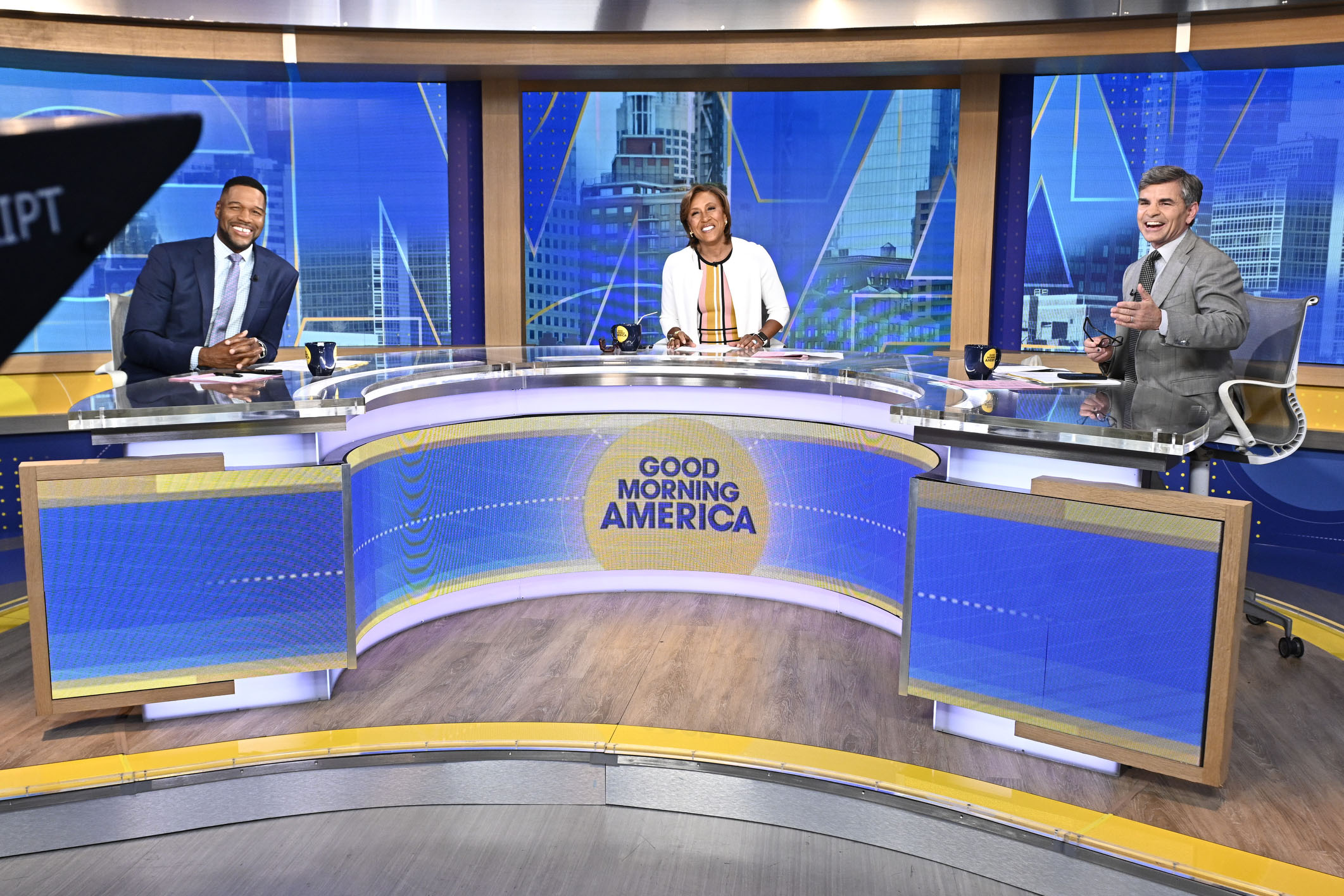Using Chin Lights to Present On-Camera Talent in the Best Possible Light
My favorite version of chin lighting is done without additional instruments

Television lighting techniques have evolved over the years, pushed by advances in camera technology and viewers’ discerning eyes. Much as our studio sets have had to become more realistic, the broad strokes of lighting have been refined to encompass the more subtle nuances that are visible now. As image resolution has increased, the adage “close enough for television” no longer holds true. Television is still a “closeup” medium, but those tight shots are now larger than life and extremely detailed.
The skin-pore-revealing detail of the medium is something that every news anchor over 30 is keenly aware of, particularly as their own smile lines begin to appear. As a result, most on-camera talent understand the value of good lighting (along with the importance of makeup and even camera shading).
Anchors attending public appearances are sometimes told that they look better in person. There are many reasons for this, but it’s sometimes retold as a subtle complaint about their lighting. I was once tempted to tell a grumbling anchor that (with apologies to Star Trek’s Dr. Leonard McCoy), “I’m a lighting designer—not a plastic surgeon!” (not that I would actually say that). They were just seeking help to “accentuate the positive.”
Lighting Techniques
Presenting on-camera talent in the best possible light is fundamental to television lighting. While there’s no single recipe to magically make everyone look great, there are techniques that help. One important tool is using fill light to moderate the prominence of wrinkles by controlling the degree of contrast. The less dark the wrinkle’s trough, the less prominent it is.
Fill light is more than an instrument within some “three-point lighting” triumvirate. Fill light includes the ambient light bouncing off all the surfaces in a normal room. Just as an echo in a room tells you if the surfaces are reflective or absorbent, the ambient light tells a story about the space. And much as an anechoic sound chamber doesn’t sound anything like an actual room, a dark studio doesn’t look like a “plausible” space—unless it’s supposed to be a cave.
News studio lighting is grid-mounted to keep the floor clear for roving cameras. That limitation presents challenges to providing natural-looking fill. “Normal” rooms have light coming from many directions at once. Table lamps, windows and bounced light from the reflective surfaces each contribute to the general lighting in a room. But studios are not natural spaces. This is where integrated desk lights or camera-mounted lights (such as Obie Lights), can help fill the gaps in creating a visually plausible space that is more flattering to the face.

One of the tools that we can use to emulate ambient light is the chin light.
The professional video industry's #1 source for news, trends and product and tech information. Sign up below.
Chin lights provide a specialized type of fill. They deliver light from below the zero-degree sightline, where grid-mounted lights can’t directly reach. They’re intended to emulate the softly scattered light that bounces off horizontal surfaces and under-light the face. This can be an actual light fixture that’s embedded in the desk or elsewhere below the height of the camera lens. For example, Walter Cronkite had two scoops on floor stands for the purpose—but there are many techniques to accomplish the same effect.
My favorite version of chin lighting is done without additional instruments. Assuming the anchor desk has a large enough acrylic top, it’s possible to use the anchor desk fill lights as bounced fill off the reflective acrylic desktop. This bounced light helps fill in the anchor’s face from underneath without using additional instruments. It does, however, require planning in conjunction with the rest of the lighting design.
Angles of Reflection and Incidence
Remembering that the angle of reflection is equal to the angle of incidence; you need to establish that the desktop is large enough, and that the bounce light angle is correct to land the light on the anchors’ faces. A bonus with this technique is that the instrumentation remains invisible to the audience.
Another advantage of this bounce technique is that the light intensity is more consistent across the area since the Inverse Square law works in your favor over the longer throw.
Light originating in the grid provides a much farther throw distance than a desktop-mounted source."
Light originating in the grid provides a much farther throw distance than a desktop-mounted source. The longer the throw distance, the less impact on intensity changes from the anchor leaning into (or out of) the light. In short, they won’t “bloom” when they lean forward. While this reflected chin light technique requires finesse to achieve, it’s the most natural-looking of all the options.
Another method to create a chin light is to build them into the anchor desk. This will require some coordination with scenic design and a bit of grip/electric/carpentry work. Compact LED fixtures, such as the remote phosphor BB&S Pipeline lights, can be tucked into a desk to gently up-light individual anchor positions.
With the short throw distance you’ll only use a fraction of the total output of these fixtures, but the demand for high-color quality and dependability remains the same. Accessories can be added to increase the effective aperture size (larger is always softer), and egg crates will help control spill and shield them from the camera view.
Another option is building your own lighting fixture into the desk using LED tape, matching power supplies and dimmers, diffusers and more. This is a much more labor-intensive option since it requires extensive custom work. Done right, it can become integral to the anchor desk’s overall design.
Whatever approach you take, the effect of chin lights should always be subtle; the goal is to softly supplement the main lighting. All added fixtures should have a color temperature that matches your main lights, and the CRI/TLCI/TM-30 numbers should be as close to perfect as possible to ensure skin tones are spot-on.
Even though chin lighting may seem like a small detail, this technique contributes to presenting your people in the best light.
Bruce Aleksander is a lighting designer accomplished in multi-camera Television Production with distinguished awards in Lighting Design and videography. Adept and well-organized to deliver a multi-disciplined approach, yielding creative solutions to difficult problems.

